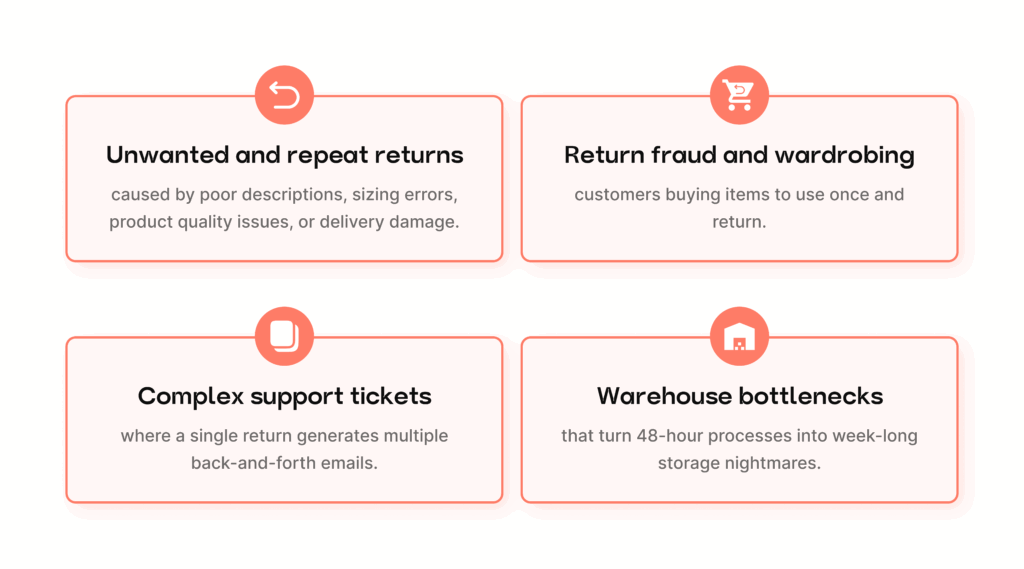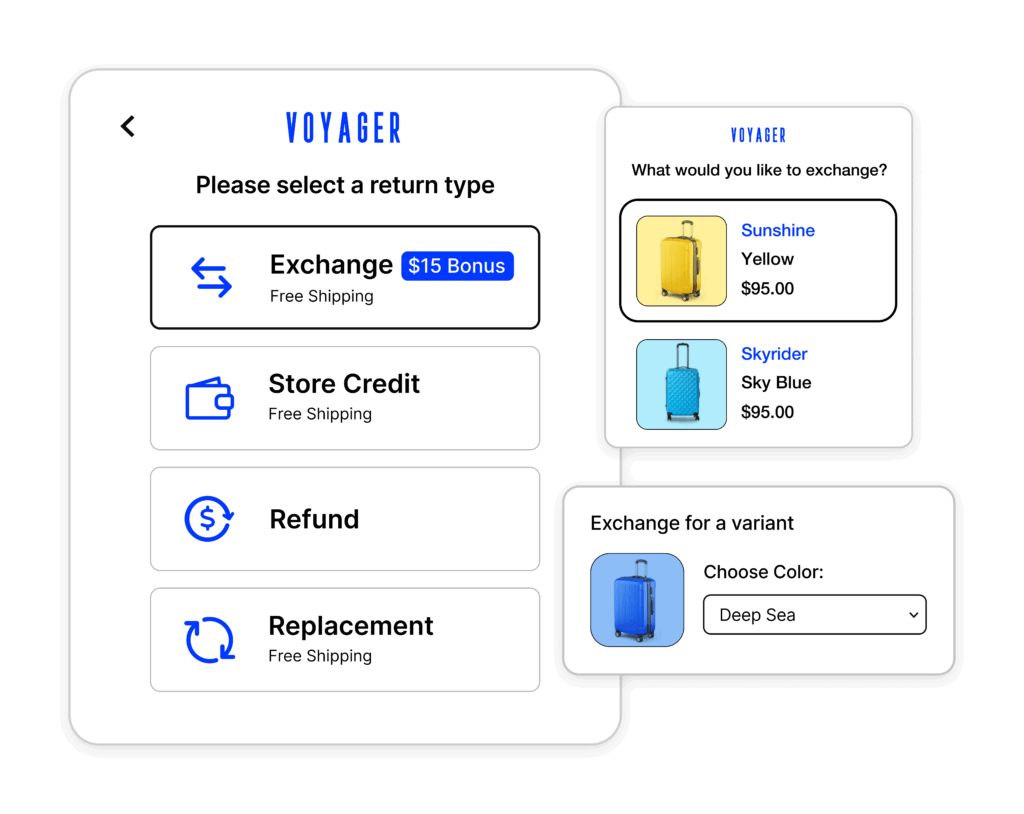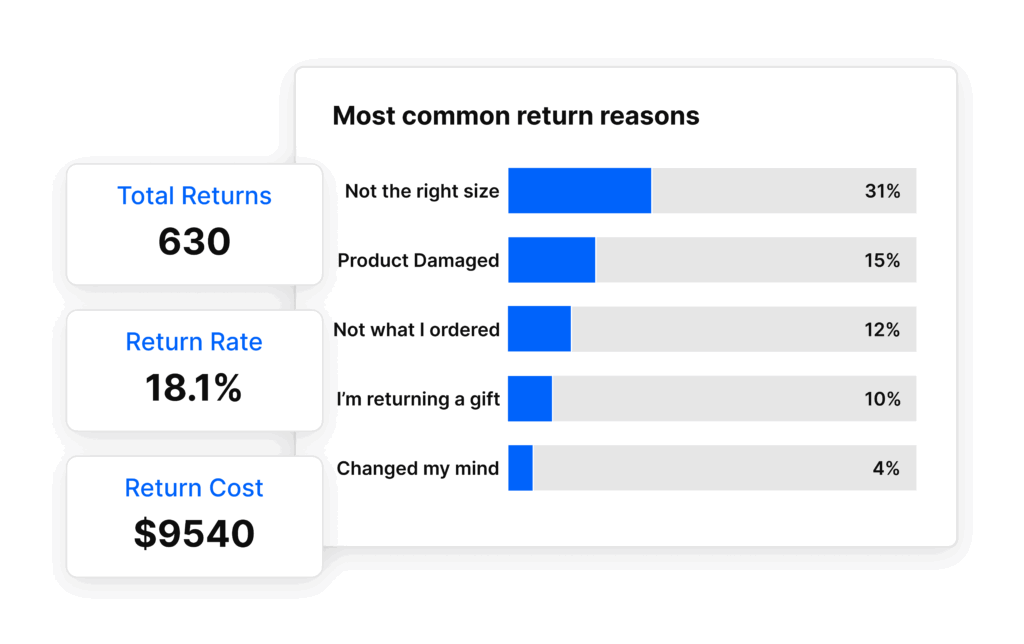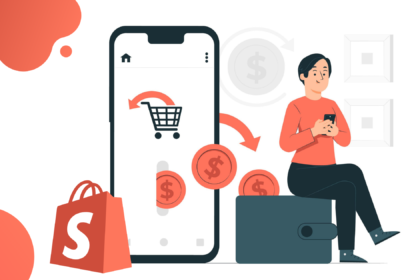Here’s the thing about retail returns: they’re not going anywhere. But the way you handle them could be costing you a fortune.
The numbers are staggering. U.S. retailers are projected to face approximately $890 billion in returns in 2025, representing about 17% of total retail sales. E-commerce return rates hover near 25%, nearly three times higher than in-store returns at 9%.
What makes this worse?
Every returned item triggers a cascade of hidden costs: reverse logistics, inspection and restocking, potential markdowns for returned merchandise, and the opportunity cost of tied-up inventory. The worst part? An inefficient returns process can eat up to 60% of an item’s original value.
The good news? These rates can be slashed with the right returns management approach.
Returns Aren't Evil—They're Essential
Let’s break down the biggest myths killing retailers’ return strategies.
Myth 1: Returns are pure cost centers that drain profit
This thinking ignores the bigger picture. Yes, processing returns costs money upfront, but restrictive return policies cost you far more in lost sales and customer lifetime value. When customers can’t return items easily, they simply stop buying from you altogether. The “cost” of returns pales compared to the cost of losing customers to competitors with better policies.
Myth 2: Returns discourage customers from shopping with you again
It’s a common misconception that when customers return a product, they’re probably not going to buy from you again. But in reality, when your customers can return something as easily as they bought it – you’ve probably made a loyal customer out of them. An easy returns process can boost purchase repeat purchase confidence by 85%
Great returns don’t have to be expensive. They just need to be smart. But to offer smart returns, you really need to understand where your returns are getting expensive in the first place.
What's Really Driving Your Return Costs?
Most retailers focus on the wrong metrics. They see return rates climbing and panic. But here’s what’s actually bleeding money

Here’s the kicker: 40% of returns could become exchanges if you made it easier than getting a refund.
Turn Data Into Profit
Product-level intelligence reveals which items have return rates above 20%. Track whether customers return because items are “too small,” “defective,” or “not as described.” Each reason points to a different fix—better size charts, quality control, or photography.
Customer behavior patterns separate legitimate returners from serial abusers. Flag customers with suspicious patterns: same address, multiple accounts, or return rates that don’t make sense.
Root cause analysis turns return pain points into competitive advantages. If customers keep saying products are “not as described,” your product photos need work. If it’s all sizing issues, your size charts are failing.
Policy optimization means different rules for different products. Electronics might get 30 days, seasonal items 14 days, and luxury goods 90 days. One size doesn’t fit all.
Smart Revenue Retention Strategies
Here’s what most retailers miss: customers who exchange spend 25% more than their original purchase. Store credit holders spend 15% more per transaction than cash refund customers.
The secret is making exchanges and store credit more attractive than refunds. Offer 10% bonus credit for choosing store credit over cash. Make exchanges free while charging for return shipping. Small incentives create massive revenue retention.
Returns Experience Management with LateShipment.com
This is where Returns Experience Management changes everything.
Self-serve returns and branded tracking enable shoppers to return without hassle through a branded return portal within your storefront. Smart policy compliance automatically enforces return windows and custom rules, while downloadable shipping labels are generated instantly. Automated return status updates via email and SMS keep customers informed with delightful, on-brand experiences, and self-serve lookup lets customers check real-time status directly from your website.
Smart revenue retention and automation turn every return into a revenue opportunity. Seamless exchanges encourage confident repeat purchases, while refund-as-store-credit options secure sales. Bonus incentives make exchanges more attractive than refunds, with compelling discounts and free shipping. Meanwhile, customizable return rules break down complex policies into automated processes, with flexible routing directing returns to the right warehouse automatically.

Management tools and intelligence help teams resolve returns faster at scale. Collaborative dashboards enable one-click resolution with every detail readily available, while advanced resolution handles partial refunds and custom deductions with ease. Returns intelligence provides trend analysis to minimize return rates, cost analysis for cutting expenses, process insights for streamlined operations, and customer satisfaction ratings to enhance the return experience.

How EPØKHE Transformed Their Returns Process with LateShipment.com
EPØKHE, a premium Australian eyewear brand, was drowning in manual return processes. Customers filled Google forms, support teams played email tag, and international returns were a nightmare with multiple carriers.
LateShipment.com delivered a comprehensive returns experience transformation: with a user-friendly self-serve portal allowing customers to initiate returns or exchanges with just a few clicks, an enhanced FAQ section on the returns portal providing clear information and reducing customer confusion, and automated shipping notifications through Klaviyo keeping customers informed about real-time return status.
The results? Support teams now spend under 2 minutes per return request, down from hours of back-and-forth. Processing time dropped 95% through smart automation. What used to be a cost center became a competitive advantage.
Your Competitive Edge
Returns aren’t just a cost center—they’re a powerful customer experience differentiator. While most competitors see returns as a necessary evil, smart retailers transform them into engines of revenue retention and loyalty. The future belongs to businesses that leverage data-driven return management to cut costs and elevate satisfaction.
When your return process becomes the reason customers stick with you over others, you’ve turned a traditional weakness into a competitive advantage.
The real question isn’t if you can afford to optimize your returns—it’s whether you can afford not to.













